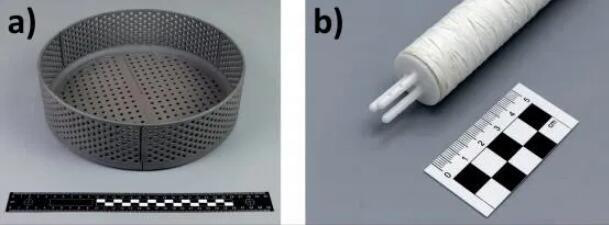In the medium to long term, the added value of 3D printed ceramic components will drive users' demand for ceramic additive manufacturing hardware and materials. For the application of engineering ceramics and advanced ceramic materials, this trend is more prominent.
The production of ceramic parts puts forward higher requirements for the cost of ceramic 3D printing technology and process integration. Still, it is more challenging to meet the quality requirements of conventional ceramic parts manufacturing.
There are five main reasons for the application of 3D printing technology in the production of ceramic parts:
Realize a very lightweight structure;
The single part of the function set replaces the structure that required many components in the past, thereby saving assembly costs and improving product performance.
Manufacture personalized components, such as orthopedic implants, dentures, etc .;
On-demand production, thereby opening up new routes in logistics and spare parts supply;
Eliminate the manufacture of expensive moulds and realize the creation of small-scale ceramic parts.

Figure 1. 3D printed lightweight ceramic container; b. 3D printed ceramic sensor, which can measure gas flow and temperature at the same time.
In general, the technologies that can be used for 3D printing in ceramic additive manufacturing fall into two broad categories. One is the technology of simultaneous material moulding and densification, including powder bed melting, directional energy deposition; the other is the technology of separating frame and densification, including material injection, material extrusion, sheet lamination, Binder spraying and photopolymerization processes (SLA, DLP, etc.). These 3D printing technologies are used to manufacture ceramic green embryos and require heat treatment of the green body to obtain the final product.
In the first type of additive manufacturing process, due to the application of a higher temperature gradient, resulting in higher thermal stress and damage in the ceramic arts, this type of technology is not the mainstream technology of ceramic additive manufacturing. Since the second type of technology includes several different 3D printing processes, this diversification increases the difficulty of applying technology and quality management in the field of ceramic production.
In principle, the problems that arise during the heat treatment of 3D printed ceramic parts are similar to the green bodies produced by conventional production methods. However, the optimization of heat treatment is usually more complicated. According to the characteristics of additive manufacturing technology, due to the high concentration of the binder and the low interlayer adhesion, delamination or cracking is likely to occur during degreasing. Compared with conventional moulding processes, in 3D printing processes with lower green density, sintering is usually more complicated, which may lead to enhanced shrinkage and warpage. In contrast, anisotropic shrinkage often superimposes, especially for 3D printing Complex filigree structure, the deformation is more dangerous.
However, manufacturing complex structures is a typical advantage of 3D printing technology over traditional technology. So, how to overcome the difficulties of heat treatment of 3D printed ceramic parts, so that the ceramic production field can take advantage of 3D printing technology?
Scientists from the Department of Materials Science and Engineering (MSE) at the University of Maryland (UMD) have transformed a 26,000-year-old manufacturing process into a novel method of manufacturing ceramic materials in solid-state batteries, fuel cells, 3D printing and other industries with broadly application foreground.
Ceramics are widely used in batteries, electronic products and extreme environments. But traditional ceramic sintering (part of the sintering process used to make ceramic objects) usually requires several hours of processing time. To overcome this challenge, a research team in Maryland invented an ultra-fast high-temperature sintering method (called UHS), which can both meet the needs of modern ceramics and promote the discovery of new material innovations.

Figure: Structure realized by UHS sintering technology
It is reported that some of the previous rapid sintering methods have many limitations, and problems such as low temperature, time and energy consumption, and high costs often occur.
The new ultra-high temperature sintering method adopted by the Maryland team provides high heating and cooling rates, uniform temperature distribution, and sintering temperatures up to 3000 degrees Celsius. Taken together, the total processing time required for these processes is less than 10 seconds, which is more than 1,000 times faster than traditional furnace sintering methods.
This invention sandwiches a compacted ceramic precursor powder green body between two carbon bars. It rapidly heats the particles through radiation and conduction, thereby creating a consistent high-temperature environment and forcing the ceramic powder to solidify quickly. As long as the temperature is high enough, any ceramic material can be sintered.
The researchers said that this method has two meanings: "Ultrafast high-temperature sintering represents a breakthrough in ultrafast sintering technology, not only because it is generally applicable to a variety of functional materials, but also because it retains or generates additional defects Has the excellent potential to create non-equilibrium bulk materials. "
TRUNNANO (Luoyang Trunnano Tech Co., Ltd ) is a professional 3D Printing Alloy CoCrW Powder manufacturer with over 12 years experience in chemical products research and development. If you are looking for high quality 3D Printing Alloy CoCrW Powder, please feel free to contact us and send an inquiry.